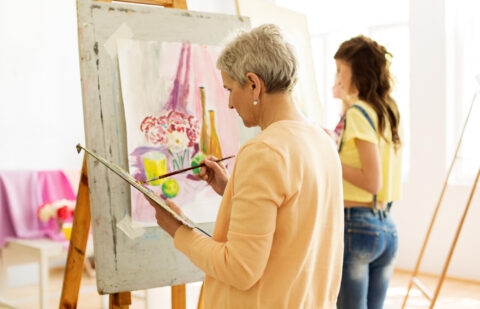Planning a family photoshoot sounds simple at first—pick a date, show up, smile, done. But anyone who has tried coordinating a group of people, especially kids, knows it’s a lot more like planning a mini-event. You’re juggling schedules, outfits, moods, weather, and the hope that everyone will behave long enough to capture one frame where nobody’s blinking, crying, or picking grass from the ground.
Still, with the right preparation, that one frame—and many more—can become a treasure you carry for years. A meaningful family photoshoot doesn’t happen by accident. It comes from thoughtful planning, a relaxed mindset, and a clear idea of what story you want your photos to tell.
Below, let’s break down how to plan a family session that feels natural, heartfelt, and worthy of a spot on your wall.
Start With the Vision: What Story Do You Want to Tell?
Before deciding on clothes or locations, it helps to pause and think about the emotional feel you want. Just as companies map out branding for product launches or filmmakers sketch storyboards for scenes, your photoshoot benefits from a clear vision.
Do you want something casual and playful—kids running barefoot in a park?
Maybe something more polished—coordinated outfits in a neutral palette?
Or something deeply sentimental—like generational photos, grandma holding her newest grandchild, with hands overlapping like a timeline?
Your vision acts as your compass. It helps you choose the right location, time of day, outfits, and photographer. It even helps shape the mood of the session. When everyone knows the vibe you’re aiming for, it becomes easier to relax and lean into the moment.
Choosing the Right Location and Time
Location sets the tone. That’s why event planners, filmmakers, and even advertisers spend so much time scouting locations—it changes everything.
Outdoor vs. Indoor
Outdoor sessions are great if you love natural light, open spaces, and organic movement. Parks, beaches, botanical gardens, or even your own backyard can work beautifully. Outdoor shoots feel less restrictive, especially for kids who enjoy moving around.
Indoor sessions, such as those held at studios or in your own home, offer more control. The weather won’t interrupt you, the lighting is predictable, and the overall mood tends to feel cleaner and more intimate. Indoor family portraits are especially great for newborns, since comfort and safety are top priorities.
Golden Hour Magic
If you choose an outdoor shoot, consider scheduling it during golden hour—that magical window of time right after sunrise or just before sunset. The soft glow makes everything look more flattering, much like how restaurants dim lights at night to create ambiance. Nature has its own built-in filter, and golden hour is it.
What to Wear: Coordinated but Not Matching
One of the biggest stresses families share is figuring out what to wear. The rule of thumb is simple: coordinate, don’t match.
Here’s how you can make outfits look cohesive without turning the family into a uniformed team:
- Choose a color palette — For example, earthy neutrals, blues with tans, or soft pastels.
- Use textures instead of patterns — Knit sweaters, linen shirts, and denim add depth.
- Avoid logos and loud prints — They tend to steal attention in photos.
- Dress for comfort — If your toddler hates wearing shoes, consider barefoot shoes as an option.
Think of it like staging a living room for a home makeover show. Designers don’t buy five identical pillows—they choose pieces that complement one another. Do the same with outfits, and your photos will feel visually balanced.
Make It an Experience, Not an Obligation
The most memorable photoshoots happen when the family treats it as something fun, not a chore. Think of the photoshoot as a mini outing—like a trip to a café or a walk through the park—where someone just happens to be taking great pictures.
Set Expectations
Kids respond better when they know what’s happening. Instead of saying, “We’re doing photos today—behave,” try:
“We’re going to have fun at the park, and someone will take pictures of us playing!”
A simple mindset shift can reduce pressure and increase cooperation.
Bring Comfort Items
Snacks, water, a favorite toy, or even a small blanket can help kids reset if they get overwhelmed. Even in industries like film production, professionals use small props or transitional items to keep young performers comfortable. The same logic applies here.
Let Moments Unfold Naturally
Instead of constantly posing, let the photographer capture candid interactions—hugs, laughter, kids exploring, parents whispering jokes. Some of the most powerful images in history, such as those documenting family life, are cherished because they convey emotion, not perfection.
Professional Guidance Makes a Difference
A skilled photographer doesn’t just press a button. They guide, anticipate moments, and shape the environment so the family feels relaxed. They know how to pose you without making you look posed. They know how to coax genuine expressions out of shy kids (or tired adults). They’re part photographer, part director, part kid-whisperer.
This is why planning ahead and selecting someone whose style aligns with your vision is essential.
Later, when selecting a session, such as a Sydney family photoshoot, it’s helpful to review the photographer’s portfolio, check their comfort with family dynamics, and ensure their style aligns with the emotional tone you want.
Prepare the Little Details (They Matter More Than You Think)
Sometimes the simplest details end up making the biggest impact:
- Pack wipes and tissues for accidental smudges.
- Bring a backup outfit for kids (and maybe adults).
- Have hair ties and a small comb ready for windy moments.
- Leave early to avoid arriving rushed or stressed.
Think of your preparation the way pilots do a pre-flight checklist: it’s not glamorous, but it guarantees a smooth ride.
Relax—Your Photos Will Be Better for It
People often forget this part: the camera sees everything, including stress. If you’re tense, the kids feel it. If you’re relaxed, they start to loosen up too.
Laugh when things don’t go exactly as planned. If a child decides they want to run, let them. Sometimes the best photo of the day is the one that wasn’t planned.
Real families laugh, move, cuddle, and breathe. That’s what your photos should capture.
Final Thoughts
A family photoshoot isn’t just an appointment on the calendar—it’s a moment frozen in time. It’s the look your child gives you when they climb into your lap. The way your partner wraps an arm around your shoulder. The tiny expressions you don’t notice in real time but mean everything later.
When you plan with intention, choose the right photographer, and let the experience unfold naturally, you create memories that feel as authentic as they look. And those are the photos that stay on walls, in albums, and in hearts for decades.
If you approach the session with love, clarity, and a sense of adventure, you won’t just end up with great pictures—you’ll end up with a story your family will cherish for years.
Disclaimer
This article gives general tips to help you plan a family photoshoot. Every family and photographer is different, so use what works best for you. Always follow safety guidelines and listen to your photographer’s advice during the session.





